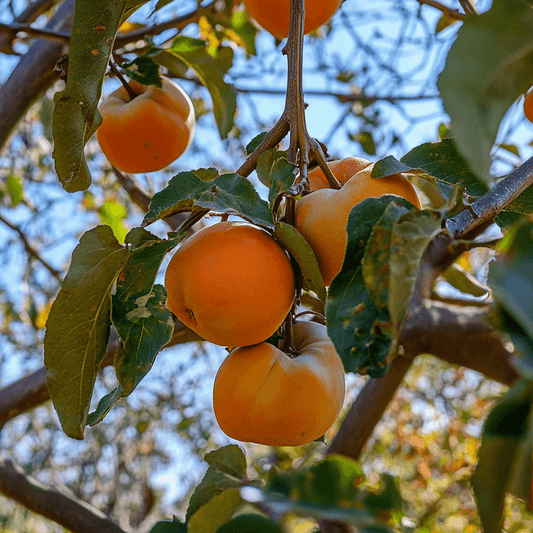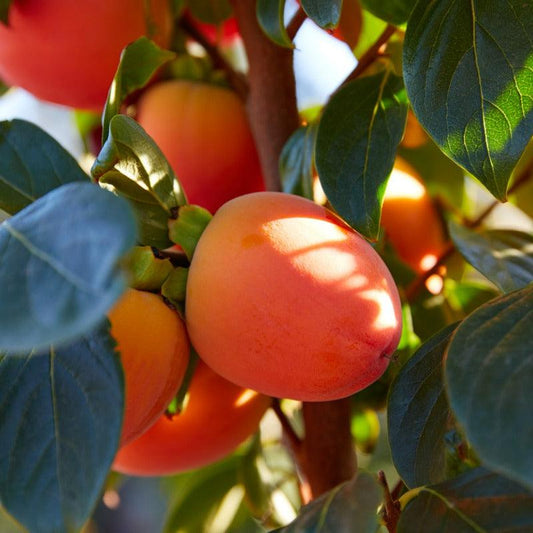Collection: Enjoy for years—Persimmons that brighten every season
Explore our selection of bare root persimmon trees, perfect for home gardens and orchards. Whether you want to buy persimmon trees for their ornamental beauty or delicious fruit, our varieties thrive in full sun and support robust fruit production.
Understanding Persimmon Trees and Flowering
Persimmon trees (genus Diospyros) are deciduous, shedding leaves in fall and showcasing vibrant foliage. They have separate male and female trees, which is crucial for successful pollination and persimmon fruit development.
- Female trees produce flowers that develop into fruit once pollinated.
- Male trees bear pollen needed to fertilize female flowers.
- Some persimmon varieties are self-fertile, but most require cross-pollination for optimal yields.
Key Persimmon Varieties
Fuyu Persimmon (Diospyros kaki)
- A popular non-astringent persimmon variety ideal for fresh eating even when firm.
- Thrives in USDA zones 7-11.
- Produces medium size fruit that is sweet and crisp.
- Grows up to 20 feet tall.
- View Fuyu Persimmon Tree
Hachiya Persimmon (Astringent Type)
- An astringent persimmon requiring full ripening to become sweet and soft.
- Suitable for zones 7-10.
- Produces larger, pudding-like fruit favored in cooking and baking.
- Can grow up to 60 feet tall.
- View Hachiya Persimmon Tree
American Persimmon (Diospyros virginiana)
- Known as a cold hardy species thriving in zones 4-9.
- Produces smaller, flavorful persimmons ideal for fresh eating or drying.
- A great choice for colder climates and naturalized landscapes.
Planting and Care Tips for Your Bare Root Tree
- Choose a sunny location with full sun for best growth and fruiting.
- Plant in well-drained soil to avoid root rot.
- Use a balanced fertilizer rich in nitrogen, phosphorus, and potassium in early spring.
- Maintain proper spacing for airflow, especially when planting both female trees and male pollinators.
- Regular pruning encourages healthy branches and promotes fruit production.
- Water consistently, especially for young trees during dry periods.
Pollination and Fruit Production
Most persimmons are dioecious, meaning male and female trees are separate. Successful fruit production depends on cross-pollination, typically with one male tree supporting 5-8 female trees. Some astringent varieties need cross-pollination to yield heavy crops, while others like Fuyu can self-pollinate with better yields from a pollinator.
Why Buy Bare Root Persimmon Trees from Us?
- High-quality bare root persimmon trees with proven cold hardiness and fruiting ability.
- Expertly grafted varieties like Fuyu and Hachiya suited for home orchards and backyard gardens.
- Access to healthy potted trees or bare root options depending on your planting preference.
- Detailed care information for success in your USDA zone.
Benefits at a Glance
- Durable bare root tree options for easier planting and establishment.
- Choices between astringent type and non-astringent persimmons.
- Versatile varieties for fresh eating, cooking, or drying.
- Suitable for various climates with cold hardy species available.
- Support for optimal fruit production with proper male and female tree balance.
Persimmon Tree Resource Center
Learn more about planting, growing, and using your persimmon harvest:




